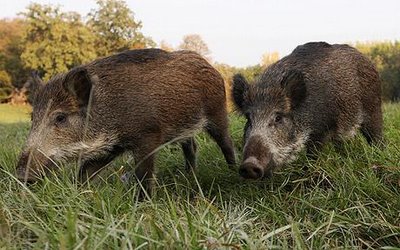Victorian sewer pigs June 7, 2010
Author: Beach Combing | in : Modern , trackback
Beachcombing has a natural and commendable enmity towards sociology. Sociologists are the foes of history and must be resisted on the beaches, in the city and in the hills. (It does not help that his father-in-law is of that profession.) But he finds some of the nineteenth-century proto-sociologists intriguing and one – Henry Mayhew – is a hero. Mayhew in his London Labour and London Poor wrote a series of brilliantly stylised descriptions of jobs in the capital and though the book was first published in 1851 he put aside all Victorian pontificating and moralising, letting the descriptions do their own work. He also had a fine sense of humour.
One legend reported by Mayhew has long intrigued Beachcombing who would badly like more information [drbeachcombing[AT]yahoo[DOT]com]. Mayhew came across said legend talking to the sewer hunters, the nineteenth-century Londoners who descended into the sewers of the capital to look for valuables that had been flushed down into the system. Ignoring the ‘roguish smell’ they sometimes made fortunes. They also feared for the sewer hogs…
‘There is a strange tale in existence among the shore-workers, of a wild race of hogs inhabiting the sewers in the neighbourhood of Hampstead. The story runs, that a sow in young, by some accident got down the sewer though an opening, and, wandering away from the spot, littered and reared her offspring in the drain: feeding on the offal and garbage washed into it continually. Here, it is alleged, the breed multiplied exceedingly, and have become almost as ferocious as they are numerous. The story, apocryphal as it seems, has nevertheless its believers, and it is ingeniously argued, that the reason why none of the subterranean animals have been able to make their way to the light of day, is that they could only do so by reaching the mouth of the sewer at the river-side, while, in order to arrive at that point, they must necessarily encounter the Fleet ditch, which runs towards the river with great rapidity, and as it is the obstinate nature of a pig to swim against the stream, the wild hogs of the sewers invariably work their way back to their original quarters, and are thus never to be seen. What seems strange in the matter is, that the inhabitants of Hampstead never have been known to see any of these animals pass beneath the gratings, nor to have been disturbed by their gruntings. The reader of course can believe as much of the story as he pleases, and it is right to inform him that the sewer hunters themselves have never yet encountered and of the fabulous monsters of the Hampstead sewers.’
In happier times Beachcombing planned a book on British Dodos (beavers, bears, wolves etc) and had hoped to sneak this into the chapter on wild boars. To that end he has long looked out for references to this story and once having finished writing the present piece he found, via google, the following article dated to March 18, 2009: (Beachcombing is looking forward to perusing thevirtualdimemuseum.blogspot.com at this leisure: it looks fabulous.)
Here we learn that Dickens picked up the reference – though regrettably without elaborating on the story – and that the Daily Telegraph wrote an editorial on the hogs ‘whose ferocious snouts will one-day up-root Highgate archway, while they make Holloway intolerable with their grunting.’ Those were the days! Lidian, the author, even got to grips with the Fleet Ditch that Beachcombing couldn’t quite bring himself to do – Mrs Beachcombing cooked a large lunch… We are now going to hunt down and are determined to enjoy Thomas Boyle, Black Swine in the Sewers of Hampstead: Beneath the Surface of Victorian Sensationalism (London 1990). But isn’t that title worryingly sociological…?



